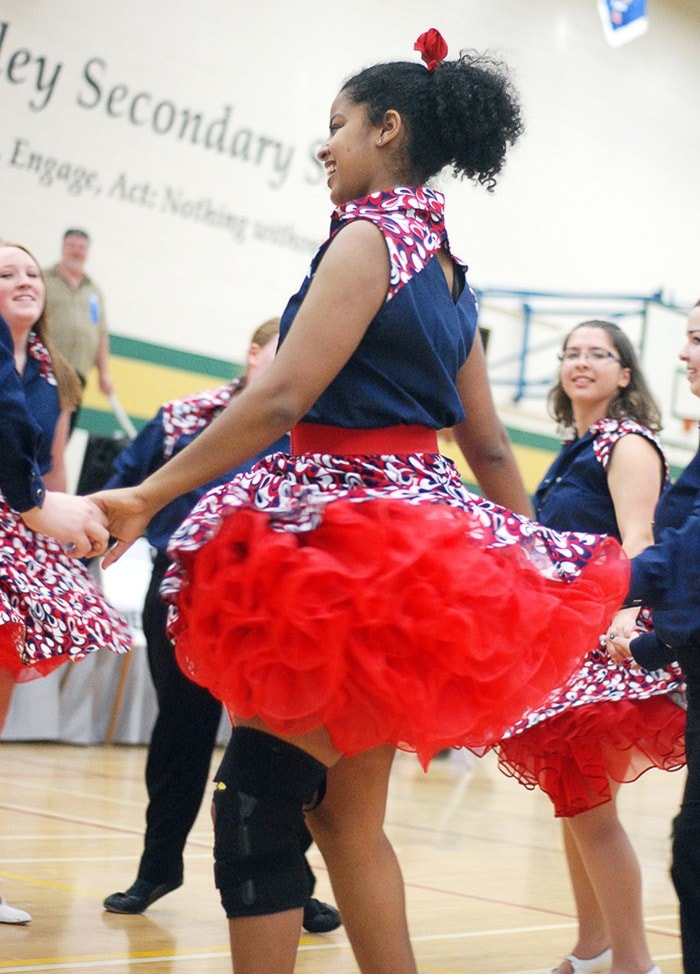Acres of colourful crinoline whirled and nimble feet stepped gracefully across the floor at Langley Secondary School May 2 and 3, during the 65th annual Pacific Northwest Teen Square Dance Festival.
Spectators crowded the LSS bleachers as more than 100 dancers from seven clubs in B.C., Washington and Oregon competed at the festival, ranging in age from six to 21.
It was Langley’s third time hosting the event, and the Lower Mainland was represented by two local youth clubs, the Wesburn Wranglers and the Delta Sundancers.
“There is a lot of history here,” says Lynnette Edlund, who helped organize the festival alongside husband and fellow Brookswood Senior Citizens Club square dancing caller Steve Edlund.
“It’s actually unique to square dancing,” she says, explaining that aside from the Pacific Northwest competition, square dance is purely a recreational sport.
Individual events at the festival included junior, pre-teen novice, novice and senior categories in square dancing and round dancing, which includes familiar dances like the foxtrot, waltz and jive.
Another crowd favourite was the calling competition, where young square dance callers sing a rendition of their choice of music and include square dance move directions. Think Adele’s “Rolling in the Deep” meets “allemande left”, “ slip the clutch” or “ladies in, men sashay”.
“This is not your P.E. square dancing,” says Edlund, referring to the often-dreaded physical education classic.
That style of traditional square dance, commonly known as “old time”, for the most part involves memorizing a step pattern and following the lead of the dancers in front of you.
The modern square dancing on display at the festival relies much more on an individual and team’s ability to dance to unfamiliar music, says Edlund, following call combinations they have never heard.
It also uses a wider selection of musical styles.
In the teen festival’s mystery tape competition, for example, teams followed a challenging combination of dance directions on a recording they have never heard before.
The dancers are judged not only on how well they follow the calls, but also on how well they adapt and recover when a slip-up inevitably happens.
“It is really another language,” says Edlund, highlighting the impact the sport has on tuning and individual’s listening skills, ability to focus as a team and physical fitness.
She notes that youth square dancing is also a highly social activity, that is relatively inexpensive compared to other forms of dance.
According to Edlund, the six-decade history of the festival has helped keep the sport alive and flourishing in the local area.
“It’s given us a lot of leaders,” she says.
“It gives the dancers the opportunity to take charge.”
Learn more about the Pacific Northwest Teen Square Dance Festival online at pntsdf.org.
